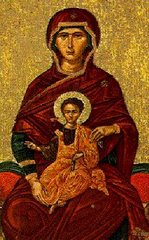The answer is usually a complex one, which often turns people away from wanting to help at all. The problem may seem too big, too widespread for one person to handle.
A popular prayer askes God to "Give me the Serenity to accept the things I cannot change, the Courage to change the things I can, and the Wisdom to know the difference." This part of Catholic Social Teaching helps us to know the difference.
Once again I direct you to the School Web Lockers for the power point we covered in class on this topic.
When an individual is hurting our first instinct is to reach out and offer help. This is called DIRECT AID. It is a personal, often one-on-one way of offering immediate assistance to a vicitm. Direct aid has immediate benefits in the life of the victim, but they are often small in scope and short-lived.
 For example, if someone's home has been burned to the ground by militant rebels, offering a blanket, food & drink, or some clothing is an immediate form of aid. But it does not rebuild the house or offer any other long-term solution, and it certainly does not stop the rebels from burining down other houses.
For example, if someone's home has been burned to the ground by militant rebels, offering a blanket, food & drink, or some clothing is an immediate form of aid. But it does not rebuild the house or offer any other long-term solution, and it certainly does not stop the rebels from burining down other houses.
Big problems also require SOCIAL ACTION, which is identifying the root cause of the problem and eliminating it. Social Action is a long-term approach to a problem that requires a lot of organization and usually a lot of manpower. Rarely  is a social action solution something that works overnight. Rather they take weeks, months, or even years. However, there impact is widespread and long-lasting (if not permanent.)
is a social action solution something that works overnight. Rather they take weeks, months, or even years. However, there impact is widespread and long-lasting (if not permanent.)
 is a social action solution something that works overnight. Rather they take weeks, months, or even years. However, there impact is widespread and long-lasting (if not permanent.)
is a social action solution something that works overnight. Rather they take weeks, months, or even years. However, there impact is widespread and long-lasting (if not permanent.) 
Using our example of militant rebels, a social action approach dictates that we investigate why the group is motivated to inflict terror on civilians. If the answer lies in their lack of financial resources or opportunities then efforts to restore balance would be helpful. If the rebels do not respond to diplomacy then it may be time to look at the conflict in light fo the Church's just war theory and determine if military action is the next step.

Social Action is the philosophy behind the addage, "Give a man a fish and he eats for a day. Teach a man to fish and he eats for a lifetime."
Direct Aid and Social Action work together, just like to feet, to help bring stability to a situation and enable progress toward a solution.
Until next time,
Ad Jesum per Mariam,
Mr. B


